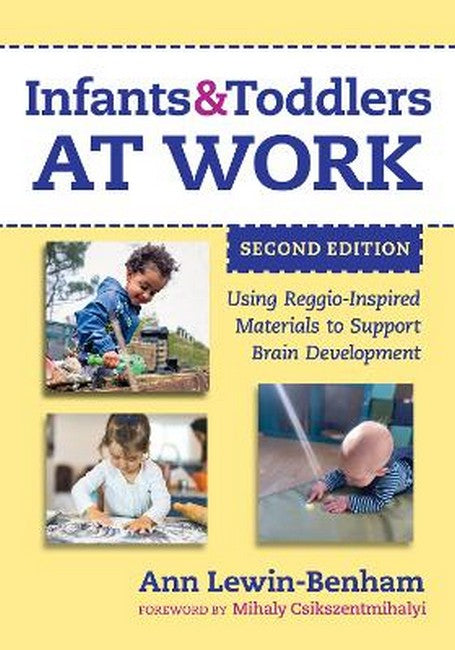Ann Lewin-Benham founded and for 20 years directed the Capital Children's Museum in Washington, DC, where she also founded and directed the Model Early Learning Center. She is the author of Possible Schools: The Reggio Approach to Urban Education and Powerful Children: Understanding How to Teach and Learn Using the Reggio Approach.
Request Academic Copy
Please copy the ISBN for submitting review copy form
Description
Contents Foreword to the First Edition Mihaly Csikszentmihalyi ?xi Acknowledgments ?xiii Introduction ?1 Impetus for the Book ?1 Research ?4 Teaching Techniques ?5 Materials ?6 Learning Exemplars: The Reggio Schools ?7 Chapter Overviews ?7 Four Big Ideas in This Book ?10 1. ?Why Use Materials? ?13 Infants and Toddlers in Flow ?14 Attention and Materials ?16 Humans: Unique Learners ?16 Sensitive Periods and Brain Plasticity ?19 Structuring the Use of Materials ?27 Conclusion: Materials' Meaning ?31 2. ?Framing Experiences ?32 The Brain's Attention Systems ?33 Facing Complexity ?36 Challenges: Glue, Scissors, Clay, Sewing ?40 Conclusion: Accumulating Skills ?48 3. ?Infants and Materials ?49 Infants' Predispositions ?49 Adults' Intentionality ?52 Food, Paper, Fabric, Sound ?54 Day by Day in Provocative Infant Spaces ?59 Conclusion: Natural Learners ?65 4. ?Man-Made Materials ?66 Cultural Contrasts: 10,000 Years Ago and Now ?67 Reggio and Neuroscience Resonances ?69 The Design and Development of Materials ?73 One Huge and Many Small Events ?78 Conclusion: Meaning-Full Materials ?83 5. ?Painting With Tempera ?84 Stumbling, Reflecting, Learning ?85 A Theory of How We Learn ?87 Teaching With Intention ?90 A Culture of Relationships ?91 Beginning Use of Tempera ?96 Conclusion: The Joy of Painting ?101 6. ?Clay ?102 6-Month- and 2-Year-Old Reactions ?102 Molding the Brain ?110 Joyful Tactile Experiences ?116 Conclusion: Clay, Creativity, and Competence ?118 7. ?Mark-Making ?119 A Natural Language ?120 An Innate Drive ?123 A Story from Reggio ?125 Complex Intersections: Drawing and Decisions ?129 Small Choices, Large Impacts ?130 Self-Portraits Plus ?133 Conclusion: Drawing, An Imperative ?135 8. ?Exploring Paper ?136 Paper, Brain, and Hand ?137 New Ways With Paper: Eight Months of Activities ?139 Paper, Infants, and Toddlers: Reggio Stories ?145 Conclusion: New Perspectives ?150 9. ?Natural Materials ?153 Learning to See ?154 Infant and Toddler Investigations of Nature ?157 The Bounty of Natural Materials ?161 Research, Nature, and the Classroom ?165 Conclusion: The Power and Pleasure of Nature ?168 10. ?Light and Shadow ?170 How We Know What We See ?170 Discovering Light and Shadow ?175 Conclusion: Enticing the Infant/Toddler Brain ?184 11. ?Using Technology with Infants and Toddlers ?186 Alex Morgan Learning the Language of Technology ?187 Exploring Digital Humanity ?188 Building Community Through Technology ?190 Conclusion ?193 12. ?Making Meaning With Technology ?194 Ryan Kurada Coding and Robotics ?194 Augmented and Virtual Reality ?195 Digital Photography ?195 Digital Landscapes ?195 Spectrogram ?196 Conclusion ?197 Appendix A: List of Materials ?199 Appendix B: Art Supplies ?203 Appendix C: Tools ?205 Glossary ?207 References ?211 Index ?215 About the Author and Contributors ?224

